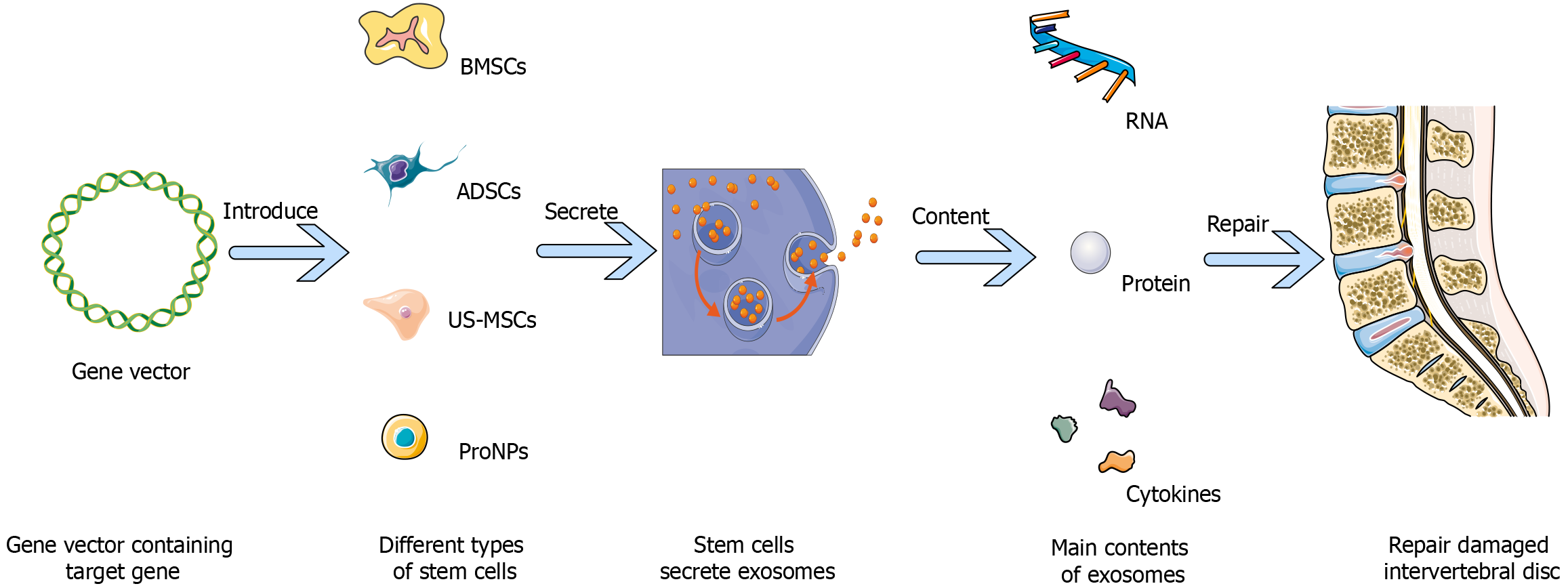Copyright
©The Author(s) 2025.
World J Stem Cells. Apr 26, 2025; 17(4): 102945
Published online Apr 26, 2025. doi: 10.4252/wjsc.v17.i4.102945
Published online Apr 26, 2025. doi: 10.4252/wjsc.v17.i4.102945
Figure 2 Gene vector-based stem cell therapy for intervertebral disc degeneration.
A gene vector containing a target gene is introduced into various types of stem cells, including bone marrow-derived mesenchymal stem cells, adipose-derived mesenchymal stem cells, umbilical cord-derived mesenchymal stem cells, and progenitor nucleus pulposus cells. These genetically modified stem cells secrete exosomes, which are rich in biologically active contents such as RNA, proteins, and cytokines. These components contribute to the repair and regeneration of degenerated intervertebral discs by promoting cellular communication, reducing inflammation, and supporting tissue regeneration. Therapy aims to restore disc function and alleviate degenerative symptoms. BMSCs: Bone marrow-derived mesenchymal stem cells; ADSCs: Adipose-derived mesenchymal stem cells; US-MSCs: Umbilical cord-derived mesenchymal stem cells; ProNPs: Progenitor nucleus pulposus cells.
- Citation: Li ZP, Li H, Ruan YH, Wang P, Zhu MT, Fu WP, Wang RB, Tang XD, Zhang Q, Li SL, Yin H, Li CJ, Tian YG, Han RN, Wang YB, Zhang CJ. Stem cell therapy for intervertebral disc degeneration: Clinical progress with exosomes and gene vectors. World J Stem Cells 2025; 17(4): 102945
- URL: https://www.wjgnet.com/1948-0210/full/v17/i4/102945.htm
- DOI: https://dx.doi.org/10.4252/wjsc.v17.i4.102945









